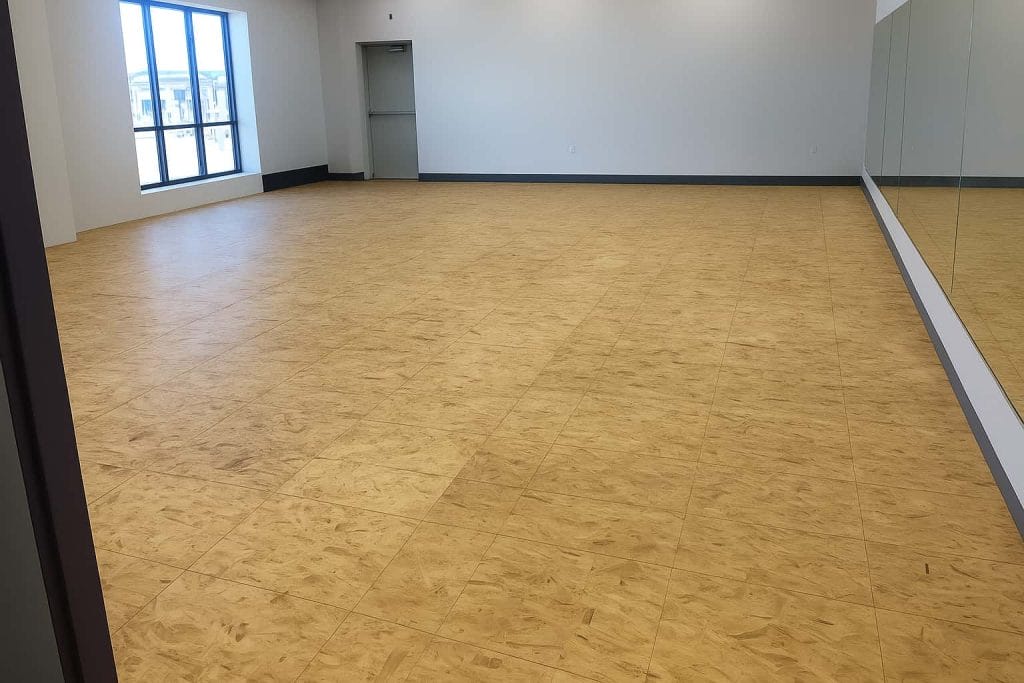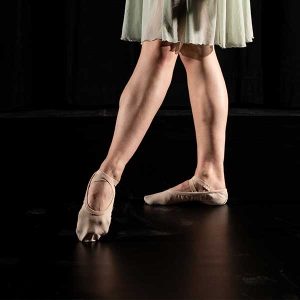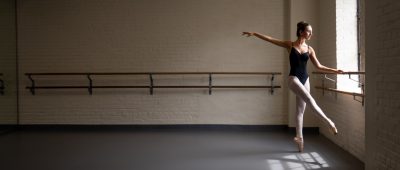There is often confusion about what a floating wood subfloor (sometimes called a sprung subfloor) actually is, and why it is essential for safe dance training.
If dancers are practicing directly on concrete, or on any surface attached to concrete — such as hardwood, vinyl, tile, laminate, or carpet — the impact on the body is approximately three times the dancer’s own body weight with every landing, jump, and directional shift.
Over time, this can lead to:
- Fatigue
- Shin splints
- Knee and hip joint pain
- Lower back stress
- Hairline fractures in the feet
Hardwood floors installed directly on concrete may look beautiful, but in terms of dancer safety, it is no better than dancing on the concrete itself.
This applies to all dancers — including young children. Growing bodies are actually more vulnerable, not less.
Raised Subfloor vs. Floating Wood Subfloor — Not the Same Thing
A common misunderstanding is thinking that placing 2x4s and plywood over concrete creates a safe floor.
That is called a raised floor, not a floating wood subfloor.
Wherever the wood touches the concrete, the impact transfers directly back into the dancer’s body. This creates an uneven “hard/soft/hard” experience that actually increases injury risk, rather than reducing it.
So What Is a Floating Wood Subfloor?
A floating wood subfloor is a floor system designed so that:
At any point on the surface, if you draw a line straight down, you hit air before concrete.
This layer of air space + energy-absorbing material allows the floor to:
- Flex
- Compress
- Disperse impact safely
- Return energy to the dancer
There are several safe ways to achieve this:
- Closed-cell foam blocks, cubes, or pads
- Foam “L-shaped” shock-absorbing supports
- Basket weave construction, where offset wood lattice layers create lift and flex
- Hybrid systems using both foam and structured wood layers
The guiding principle is:Air everywhere, no direct contact to concrete.
Why the Wood Layer Matters
A subfloor must also provide lateral (side-to-side) support for balance and alignment.If you simply place a dance floor directly over foam, the dancer will sink into the surface, similar to dancing on a trampoline — unstable and unsafe.
This is why:
You must have a wood layer between the foam and the Marley or wood top surface.
This wood layer distributes weight evenly and supports clean technique.
Why a Floating Wood Subfloor Is Essential for Dance
A properly built floating wood subfloor:
- Reduces physical stress and overuse injuries
- Allows dancers to train longer and with less fatigue
- Supports safe jumping, landing, and pointe work
- Ensures long-term joint and muscle health
- Enhances movement quality and performance ability
Simply put: A floating wood subfloor is not optional — it is a dancer safety requirement.
Stagestep offers:
- Prefabricated subfloor systems for fast installation
- DIY subfloor designs for contractors and studio owners
Contact us to discuss your studio layout, flooring needs, and get a customized quote.



